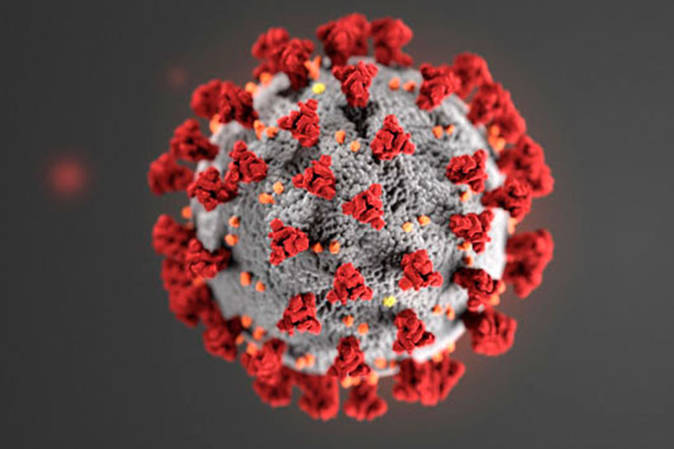Health officials are seeing an increase in COVID-related illness and hospitalizations in children under 19 years old, according to information presented in a public briefing on Wednesday.
Dr. Lisa Rabinowitz, a staff physician with the Alaska Department of Health and Social Services, presented in a pop-up public forum via Zoom on Wednesday evening. She said the increase within younger demographics is likely due to the fact that many are still ineligible for the COVID-19 vaccines.
The Pfizer-BioNTech vaccine is currently approved for people 16 and older, while the Moderna and Johnson & Johnson/Janssen are approved for adults 18 and older.
Rabinowitz said to think about the vaccines like a Snapchat: The shots deploy a small recipe of information to the immune system which then quickly disintegrates into the body. If someone is exposed to COVID after vaccination, the body will respond appropriately, she said.
The country is expecting to see Food and Drug Administration approval of the Pfizer vaccine for kids 12 to 15 years old soon. The company has conducted a clinical trial of 2,260 children in this age group and reported its vaccine was safe and 100% effective among participants, according to data presented by Rabinowitz on Wednesday. She also said the dosage will not differ between adults and children.
Pfizer applied for emergency use authorization on April 9 and is waiting for the FDA to review the data, which Clinical Pharmacist Coleman Cutchins said he predicts might be within the next month. He also said clinical trials on kids under 12 years old are underway, but the vaccines may not be approved for them until late fall or early winter.
Moderna is expected to be granted approval for younger populations after Pfizer, Cutchins said on Wednesday.
Other officials at the forum on Wednesday included Pediatrics Doctor Michelle Laufer and School Nurse Health Consultant Barbara Pennington.
Laufer said in the cases of the pertussis (whooping cough) shot, babies under 2 months old who are ineligible to be inoculated depend on the immunity of those around them. Pertussis is a sometimes-fatal respiratory illness most harmful to infants, which is why the Centers for Disease Control and Prevention recommends the vaccine and subsequent booster shots to protect the infants.
She said the same is true with the COVID-19 vaccines: Getting the shots can provide the necessary safety bubble for kids still ineligible.
“I feel like it’s the most science-based intervention I offer my patients,” Laufer said about the vaccines.
Pennington said Alaska state schools will not be requiring the vaccine as a prerequisite for enrollment.
Rabinowitz and Cutchins also appeared on a Thursday press briefing, along with other DHSS officials Heidi Hedberg, Bryan Fisher and Louisa Castrodale. They all said they are planning on vaccinating their kids once the vaccines are granted FDA approval.
“This is the way to get our kids’ lives back to normal,” Cutchins said of both his 12- and 15-year-old.
Heberg said her 12-year-old is excited for the vaccine, and her 8-year-old is jealous to have to wait longer.
Fisher’s two 15-year-olds have decided for themselves to get the vaccine, he said.
Castrodale said on Thursday that while she can’t always protect her kids from injury or illness, knowing she can prevent them from contracting COVID-19 is comforting.
“When you have that opportunity, take it,” she said.
Vaccination rates
DHSS reported on Thursday that more than 253,000 people in Alaska — 33.8% of the population across all ages — are fully vaccinated against COVID-19. Additionally, over 293,000 people — 38.7% — have received at least one dose.
That’s compared to an estimated 70.3% of Alaskans 65 and older who are fully vaccinated and 74.5% who have received at least one dose.
In the Kenai Peninsula Borough, 29.8% of Alaskans of all age groups are fully vaccinated against COVID-19 and 33.1% have received at least one dose. Over half of peninsula seniors — 62.1% — are fully vaccinated, according to DHSS data on Thursday.
The borough’s vaccination rates are increasing at a slightly lower rate than the state’s. In DHSS data taken between April 5 and April 28, Alaska reported a 12% vaccination rate increase among those 16 and older. On the Kenai Peninsula, the increase was 10.4%.
Officials with the state have estimated anywhere between 70% and 85% of the population will need to reach immunity through vaccination before a significant decrease in community spread can occur.
New cases
The state reported 161 new COVID cases on Thursday, which included six on the peninsula.
Affected communities include Soldotna with four, and Kenai and Seward with one case each.
Alaska remains at high-alert level, categorized by having an average of 10 or more positive cases per 100,000 people over a two-week period, with an average of 21.28. Out of the seven Alaska regions in the high-alert level, the Kenai Peninsula Borough is the third highest with 17.94. The highest risk level is in the Fairbanks North Star Borough with around 47.05 positive cases per 100,000, while the lowest-risk Southwest Region reported an average of only 4.54 cases per 100,000 people.

